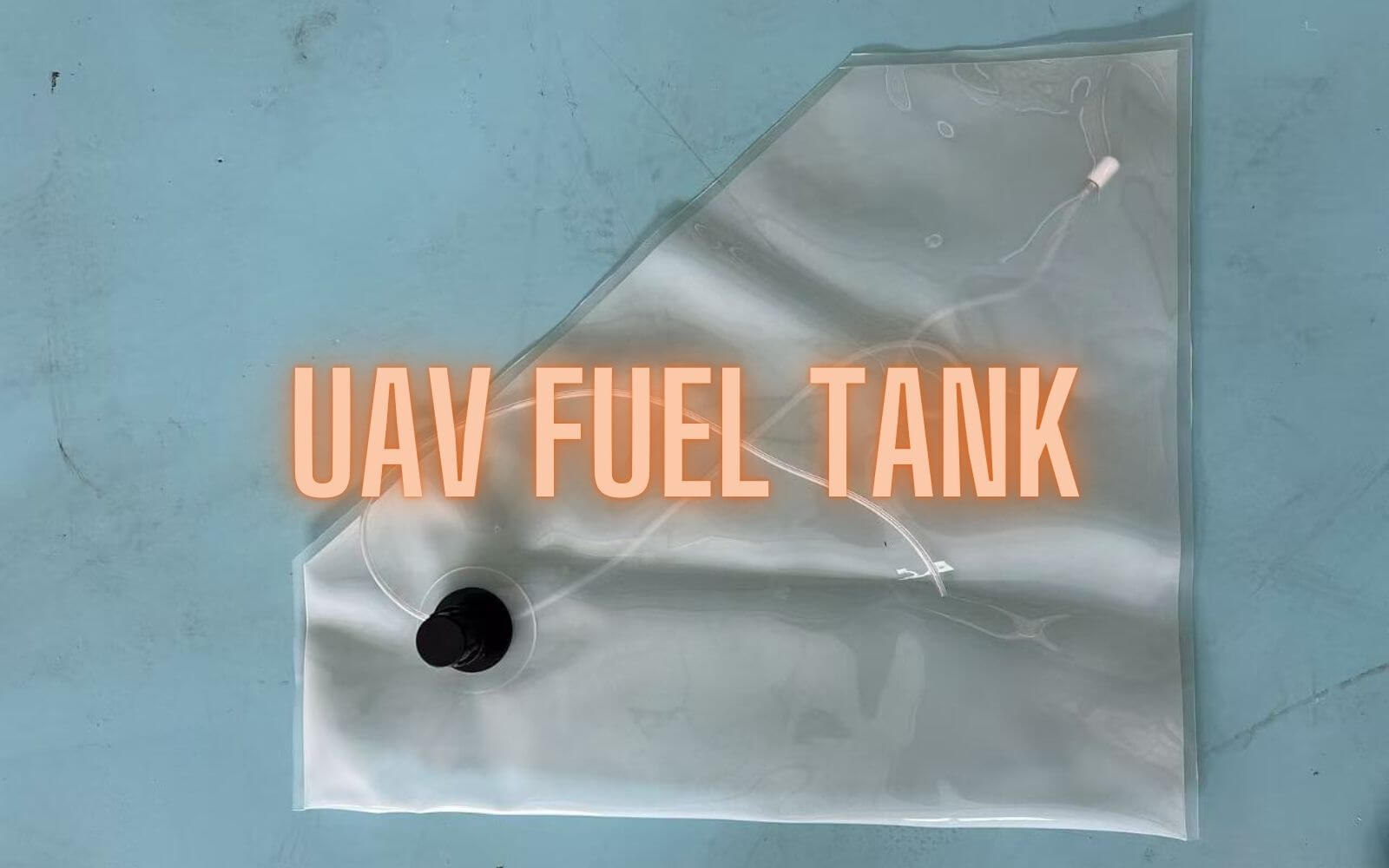UAV FUEL TANK
As UAV technology advances, on shelf rigid fuel tanks often can’t meet the specialized demands of modern drone operations, as most of time, the rigid tanks can’t exact meet the shape of the aircraft. Custom UAV fuel tank manufacturing make bridges to cross this gap, offering tailored solutions for unique airframes, fuel types, and mission profiles. This guide explores when bespoke fuel tanks become necessary and how they’re transforming UAV performance.
1. Matching Tank Geometry to Airframe Design
Standard fuel tanks frequently compromise a UAV’s aerodynamic efficiency. Custom solutions address this through:
Conformal Tank Engineering
Precisely match to unused airframe spaces, the fuel flow will reach the space to make the bladder fitting to each corners.
Maintains optimal center of gravity, adding the fuel foams to keep the balance to ensure the safety.
Case Study: A Tier 1 defense contractor gained 17% more fuel capacity by replacing cylindrical tanks with conformal designs in their MALE UAV.
Weight Distribution Optimization
Computational Fluid Dynamics (CFD) modeling(customization on shape + anti-splash foams) for flight stability.
Strategic placement of baffles to control fuel slosh, customization.
Example: Agricultural drones spraying steep vineyards require asymmetric tank designs
Modular Integration
Quick-disconnect interfaces for swappable tanks
Vibration-dampening mounts for sensitive payloads
Standard fuel tanks often force UAV designers to compromise their airframe’s performance. But custom size and shape optimization eliminates these limitations through precision engineering.
2. Size Customization
Micro-UAV Solutions (50ml-1L capacities):
Ultra-thin profiles for nano drones (as slim as 8mm)
Stackable modular designs for swarm operations
HALE UAV Systems (100L+ capacities):
Segmented tanks maintaining structural integrity
Wing-integrated solutions for Global Hawk-class platforms
Example:
A border surveillance UAV gained 22% more loiter time by custom-sizing tanks to exploit every cubic centimeter of wing space.
Besides the capacity we mentioned above, the size of the fuel bladder can range from 1L to 10,000L, for UAV flight fuel supply, the 10L-100L used the most.
3. Shape Customization
| Airframe Type | Optimal Tank Shape | Benefit |
| Fixed Wing | Toroidal (doughnut) | Centers mass around payload bay |
| VTOL | Dual lobed | Balances transition phases |
| Tailless Delta | Chevron-shaped | Maintains aerodynamic silhouette |
| Flying Wing | Multiple slender cells | Distributes weight across span |
Advanced Techniques:
Topology Optimization: AI-driven designs removing non-critical material
Morphing Bladders: Silicone cells that expand/contract with fuel load
3D Wave Baffles: Curved internal structures that minimize slosh without reducing capacity
Breakthrough Case: A solar-powered UAV achieved record 94-hour endurance using custom elliptical tanks that doubled as structural wing elements.
4. Integration Methodologies
Form-Fitting
Laser-scanned airframe cavities → perfect-fit tanks
0.5mm tolerance manufacturing
Load-Bearing Designs
Tanks as stressed airframe members
Up to 15% overall weight reduction
Dynamic Volume Adjustment
Collapsible sections for fuel consumption compensation
Maintaining optimal CG throughout flight
5. Specialty Fuel Compatibility Considerations
Not all UAV fuels are created equal. Custom tanks accommodate:
| Fuel Type | Tank Requirement |
| JP-8 | Nickel-plated internals prevent sulfur corrosion |
| Biofuels | Butyl rubber compatibility for alcohol blends |
| Avgas | Reinforced seams for higher vapor pressure |
| Hydrogen | Cryogenic-capable composite materials |
Real-World Impact:
When a maritime surveillance UAV switched to biofuel, custom tanks with alcohol-resistant liners prevented $280K in fleet maintenance costs annually.
6. Rapid Prototyping Approaches
Modern manufacturing enables fast iteration:
3D Printed Prototypes
SLA-printed transparent tanks for fluid dynamics testing
72-hour turnaround from CAD to physical prototype
Hybrid Manufacturing
Laser-welded aluminum cores with composite exteriors
CNC-machined test fittings
Virtual Validation
Finite Element Analysis (FEA) for stress testing
Digital twin simulations before production
Industry Benchmark: Leading OEMs now reduce development time from 12 weeks to 18 days using these methods.
7. When to Choose Custom Over Standard
Consider bespoke UAV fuel tanks when:
✔ Your airframe has unconventional geometry
✔ Operating specialty fuels beyond standard diesel/Jet-A
✔ Mission duration exceeds 8 hours
✔ Payload capacity is critical
✔ Operating in extreme temperatures (-40°C to 90°C)
8. The Custom Manufacturing Process
Requirement Analysis (1-3 days)
Flight profile review
Fuel chemistry testing
Making sure the fuel consumption and the loading capacity needed.
Design Phase (1-5 days)
CAD modeling with CFD/FEA integration
Prototyping (7 days)
Functional testing (vibration, pressure, slosh)
Production (7 days)
Batch production with quality control checks
9. Cost-Benefit Analysis
While custom tanks cost 30-50% more upfront, they deliver:
15-25% increased flight time
40% lower maintenance costs
100% mission-specific optimization
Conclusion
Custom UAV fuel tank moves beyond one-size-fits-all solutions to unlock:
✓ Maximum fuel efficiency through perfect airframe integration
✓ Future-proof compatibility with emerging fuel technologies
✓ Rapid deployment via advanced prototyping
For operators pushing the boundaries of endurance, payload, or operational environments, bespoke fuel tank solutions provide the competitive edge.








